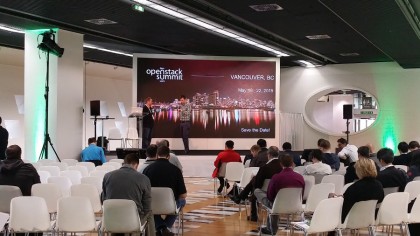Weighing up OpenStack: from Juno to Kilo and beyond
There's a lot going on in the cloud

Launched in recent weeks, Juno, the 10th version of OpenStack, brings a slew of new features and even more bug fixes.
According to Jonathan Bryce, executive director of the OpenStack Foundation, Juno's successor, called Kilo, will add functionality based around managing bare metal platforms, helping telcos save costs using Network Functions Virtualization (NFV) and maximising performance out of high-performance applications. Thanks to OpenStack's bi-annual release schedule, Kilo will become available in April 2015.
We caught up with Bryce at the OpenStack Summit in Paris to discuss issues ranging from downtime to staff training, switching from commercial to open source solutions and what it means to be a platinum member of the OpenStack community.
TechRadar Pro: Can you take us through some of the big features in Juno?
Jonathan Bryce: Versus the initial releases, Juno is interesting because it's focused on operations, and things that make it easier to build, manage and scale an OpenStack cloud.
There were 10 times as many bugs fixed as there were features implemented in Juno. In the previous release, Icehouse, there was a feature that allowed for rolling upgrades in an environment that basically let you upgrade an environment over time while you moved workloads.
Juno enhanced that upgrade capability so that you can do live upgrades and upgrade your cloud underneath the running workloads. That's big for people running it in production. There are also little details that come directly from user feedback. We love to get users to the summit and speak, because we have more developers here than we ever get in one place. We do that every six months.
Sign up to the TechRadar Pro newsletter to get all the top news, opinion, features and guidance your business needs to succeed!

TRP: Can you name any features that have come off the back of user feedback?
JB: One is Rescue Mode which is in Juno. If you run a data centre and a server crashes, in the world you would connect a monitor and keyboard to it to see errors on the screen saying what went wrong. A disk may have crashed, but you don't want to reboot the server because you might lose data. In the virtual world you can't go in a data centre and connect a monitor to the server, but with Rescue Mode, you can remotely connect to the console of a virtual machine.
OpenStack has had that for a very long time, but operators told us that they need to be able to boot a disk rescue image and safe boot different kinds of things, so there's a ton of work around that in Juno.
Another interesting component in Juno is for doing data processing-as-a-service, which is basically MapReduce as a service. It's a system that supports Apache Hadoop, Cloudera Hadoop, Hortonworks Hadoop and Spark. It automates thin provisioning and scaling of these kinds of workloads on top of an OpenStack environment, which was a very user-driven feature and something that came out of big data, which is a really common use case for OpenStack.
TRP: What will developers try to achieve with the next release, Kilo?
JB: We'll once again see more operational updates. There'll also be something on standardising how logging and configuring is done across different pieces of OpenStack. In terms of new capabilities, there's a bare metal management feature that's going to be in Kilo that has support for different bare metal platforms.
Basically, you can have a pool of servers and image them directly without a hypervisor. So for high-performance applications where there might be some specific type of hardware that you need to access - such as a GPU for rendering - there is a new set of workloads opened up that can be managed under OpenStack.
